I was born on May 11, 1985, in Baton Rouge, Louisiana, USA, where my parents met while studying at Louisiana State University. When I was two, we returned to Malaysia and settled in Ampang, Selangor.
As the eldest child of 10 siblings, I grew up in a large family, so life was always lively and chaotic.
My upbringing was shaped by a strict Islamic environment - I frequently attended religious schools and participated in faith-based events and activities. My father was also deeply involved in Tabligh missionary work, which required him to spend extended periods away from home, so my siblings and I were primarily raised by my mother, grandmother, and grandaunt.
Early Lessons in a Big Family
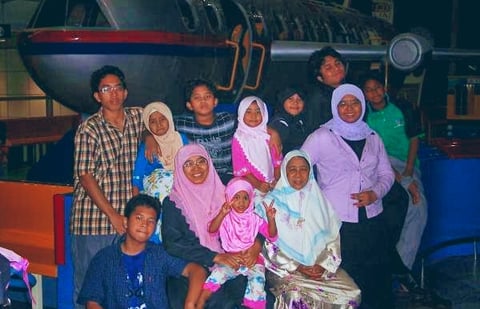

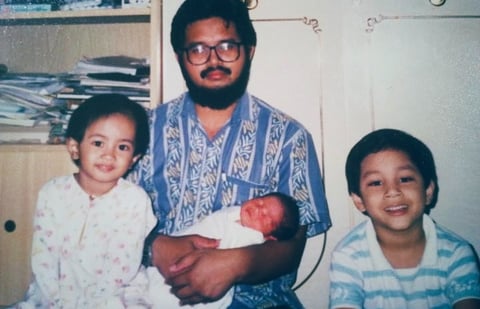

(1990) From left to right: My sister, Asma', my late father Ridzuan Ismail, my brother, Haniff, and myself at 5 years old.
(2006) Me and my 9 siblings, mother, and grandmother, all gathering at KLIA airport as I prepare to fly to the UK for university.
During my early teens, I switched schools several times, which forced me to adapt quickly. Bullying was common -sometimes just teasing, sometimes more serious. By the time I turned 14, I enrolled in the Royal Military College (RMC), a decision that introduced me to the concept of brotherhood and military discipline. Life at RMC was tough: early morning drills, demanding academic schedules, and plenty of sports. I got hooked on martial arts - Silat, boxing, kickboxing, and even dabbled in capoeira later in life.
Those four years gave me a taste of physical and mental endurance. They also nurtured a strong sense of loyalty and camaraderie that I’d carry into my future business dealings. (My time in RMC is a treasure trove of stories, some thrilling and some humbling, but I’ll save a few of those for my upcoming book.)
Beyond sports, I loved gaming, particularly strategy games, which sparked my curiosity for computers. As a teenager, I would tinker with old computers, upgrading parts, experimenting with hardware, and occasionally breaking a few along the way. Reading was another passion; I devoured books and comics to pass the time.
Boarding School & a Taste of Discipline


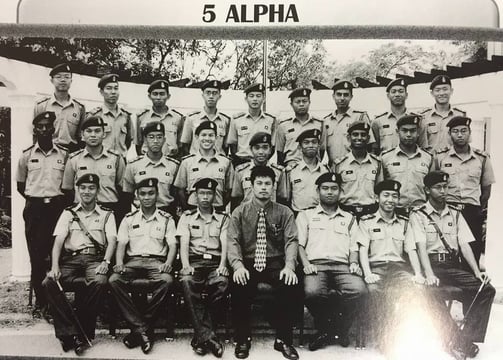

(2002) My passing-out parade at the Royal Military College, marking our Form 5 graduation.
(2002) Class 5 Alpha—my science stream cohort.
Spending my school holidays working at our family’s wood factory gave me firsthand exposure to industrial operations. I saw how products were made, how materials were sourced, and where things could be improved. I also witnessed the downside of the industry - wood waste being generated, the toxic scents of chemically treated adhesives and coatings. These concerns lingered in my mind, but as a young boy, I hadn't put the pieces together yet.
After finishing university - where I studied Management at The University of Nottingham, UK - I officially joined the family business in 2008 at 23 years old. At this point, the company had already been running for 15 years, primarily focusing on traditional manufacturing, servicing public institutions, government agencies, GLCs, and private corporations through conventional furniture manufacturing, trading, and interior fit-outs.
Finding My Path: Sustainability & Craftsmanship
The business was doing well, but we relied partly on government contracts and project tenders, which didn’t always provide a consistent pipeline of work. I saw room for growth, particularly in how we approached production, material sourcing, and sustainability. I wanted to explore how we could innovate our products, explore the open market, and transition toward more responsible manufacturing practices.
The defining moment came in 2012 when I learned that Malaysia had one of the world’s highest deforestation rates. As someone who grew up in the timber industry, that hit me hard. The realisation forced me to put my foot on the pedal. I didn’t want to contribute to the problem - I wanted to be part of the solution.
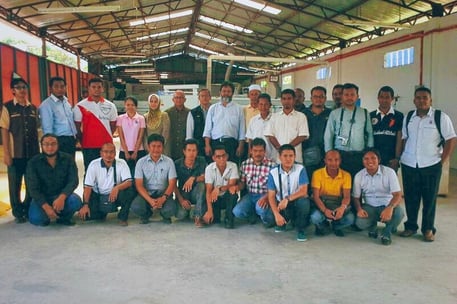

(2013) Malaysian Timber Industry Board (MTIB) and 30 timber companies visiting our old factory in Sungai Buloh to view our production line and machineries.
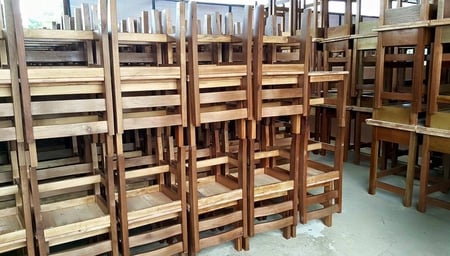

Since 1998, my family’s company has served as a contract panel for the Ministry of Education, supplying school furniture to multiple states across Malaysia.
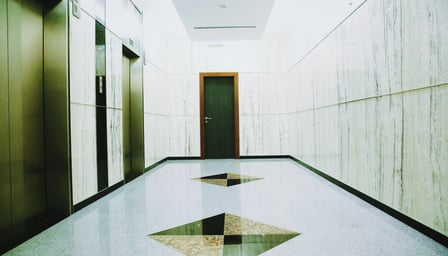

(2015) One of our key milestones was securing the 24-floor refurbishment contract at Menara PNB in Kuala Lumpur.
My earliest experiments with eco-friendly materials didn’t always go smoothly. Workers had to adjust their methods, and my mother, who played a key role in the business, was skeptical at first. She’d see me hauling “scrap wood” into the factory, taking up more space than she'd like and wonder if I was losing focus on our core work.
At the same time, I began collaborating with a few like-minded friends on small side projects, exploring fresh design concepts and experimenting with ways to achieve finer finishes using reclaimed wood. Though this process required extra care and patience, those early trials proved that “scrap” could rival newly milled timber in quality.
The Birth of The Green Carpenter
Once a few “hipster cafés” started commissioning our upcycled furniture, our direction solidified. Upcycled, sustainably produced pieces found a niche - and that small opening was all I needed to prove that responsibility and innovation could coexist.
In 2013, I branded myself as "Harith Green Carpenter" to distinguish a new revenue stream from our traditional offerings. At the time, my goal was simple: to explore sustainable design without disrupting the core business. By positioning Harith Green Carpenter separately, I could refine new ideas, develop green furniture, and carve out a unique space in the market. What started as a small experiment soon took on a life of its own, and before I knew it, the name grew to become my professional identity for the next 15 years.
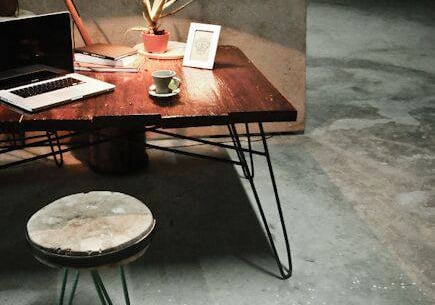

(2017) Five years into my upcycling journey, our factory overflows with salvaged timber—sourced both in-house and from external sites.
(2013) One of my earliest experimentation was 'Ard Krate' - a reclaimed furniture project I collaborated on with graphic designer & entrepreneur, Sayid Abdul Rahman and entrepreneur, Izuan Al Yahya.
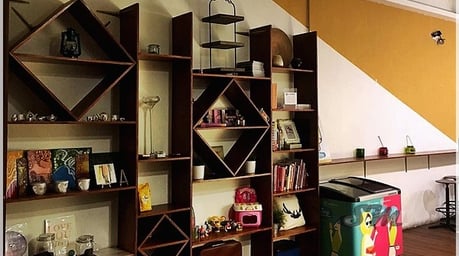

(2015) Display unit made from upcycled wood for bakery shop, Souka in Petaling Jaya. Photo by Sumpermeng Malaya
By 2015, our customer base expanded to include high-end restaurants, prompting me to explore the production of wooden homeware and kitchenware items such as chopping boards, display boards, and cutlery holders based on our clients' needs.
That same year, I founded “Dapo,” a lifestyle brand dedicated to high-quality woodware for the home. My wife, Aiqa, also became more involved at this stage, focusing on Dapo’s visual communication - handling photography, copywriting, posters, and product catalogues -while I concentrated on growing the product range.
As the brand took off, we went on to create bespoke products for notable clients like Ben's, Mandarin Oriental, Jibby & Co, The Ruma Residence, and Entier restaurant.
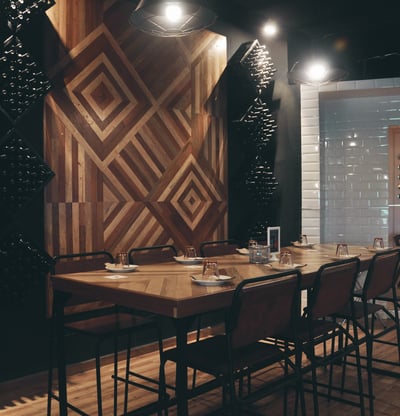

(2017) A premium display of reclaimed timber at Symphony by Chef Jo. This project also allowed us to dive deeper into crafting wooden kitchenware.
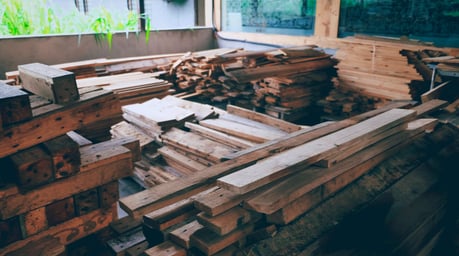

At this stage, I was gaining some traction - “There’s this guy who calls himself The Green Carpenter and he’s turning scrap wood into something new. Let’s see what he’s doing.”
I began receiving invitations to speak at events and share my experiences -starting with my first talk at INTI International University & Colleges in 2016 on upcycling in design and sustainability. Although it was a small event, it opened my eyes to the importance of spreading awareness. Around the same time, media outlets and TV stations also began approaching me. The more I spoke about sustainability, the more businesses, policymakers, and industry players reached out for insights.
It became clear that sustainability wasn’t just something to practice in our own factory. I realised I needed to shift my focus from simply running a green business to actively advocating for sustainable practices on a broader scale.
From Manufacturer to Advocate
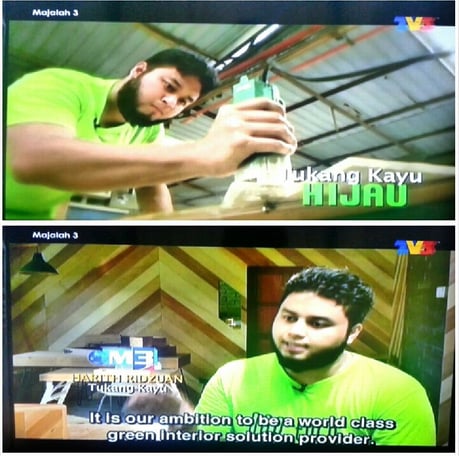

(2015) My debut on national TV: Interviewed on TV3 to share my journey in eco-friendly manufacturing.
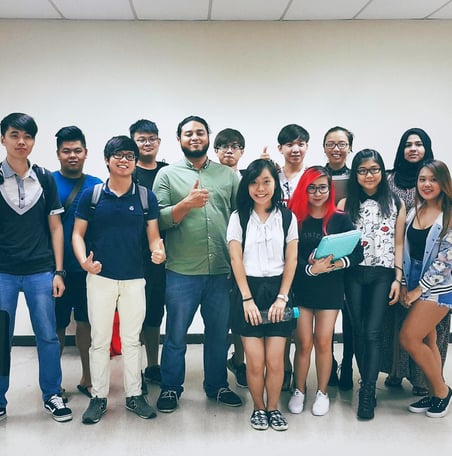

(2016) My first speaking invitation, in collaboration with INTI International University & Colleges at EcoFest Talk 2016: Upcycling in Design and Sustainability.
As my advocacy and collaborations grew, so did my vision. I didn’t just want to build sustainable products - I wanted to create an ecosystem that could drive real change within industries. That’s when I realised that if I truly wanted to make an impact, I needed to provide not just products, but solutions, education, and a space for innovation.
In 2017, we made a bold move, relocating from our 1-acre facility in Sungai Buloh to a more compact 13,000 sqft factory in Ampang - right in my hometown. The transition meant operating in a space that was less than a third of our original size, but it also presented an opportunity: to implement circular principles and refine our processes for maximum efficiency.
With this shift, The Green Factory was officially born - a model for sustainable production that went beyond just using responsibly sourced wood. We implemented circular economy principles, reduced our environmental footprint, and introduced upcycling as a core practice. For this initiative, we were awarded the Good Design Japan Award in 2018.
The Green Factory
The Green Factory is not just about making eco-friendly furniture - my goal was to make it into a hub for green manufacturing, research, and design. Aside from creating hundreds of sustainable designs & products annually, we've opened our doors to thousands of visitors, allowing businesses, students, and policymakers to see firsthand how sustainability could be integrated into production. Over time, we developed strategic collaborations with organisations that want to incorporate sustainability into their operations, from retail and hospitality to corporate offices and educational institutions. To learn more about The Green Factory and our ready-made products, click here.
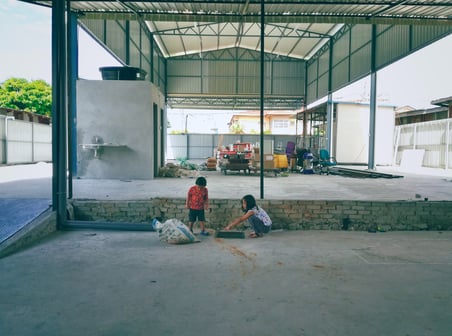

(2017) My daughter Hanna and son Aidan exploring our newly established factory grounds in Kampung Baru Ampang, Selangor.
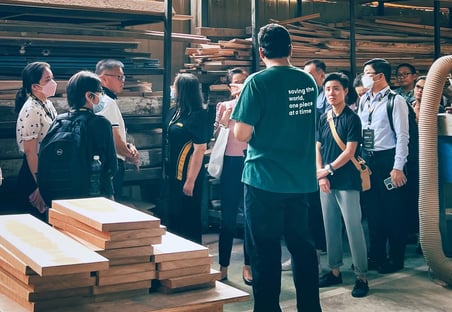

Since 2019, we've hosted an annual open factory open days to raise awareness about green manufacturing.
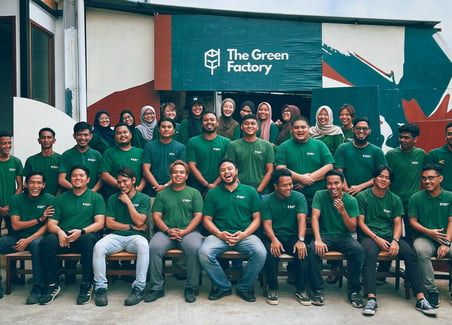

(2023) At our peak, we reached 45 team members—full-time employees, apprentices, and interns—our largest workforce to date.
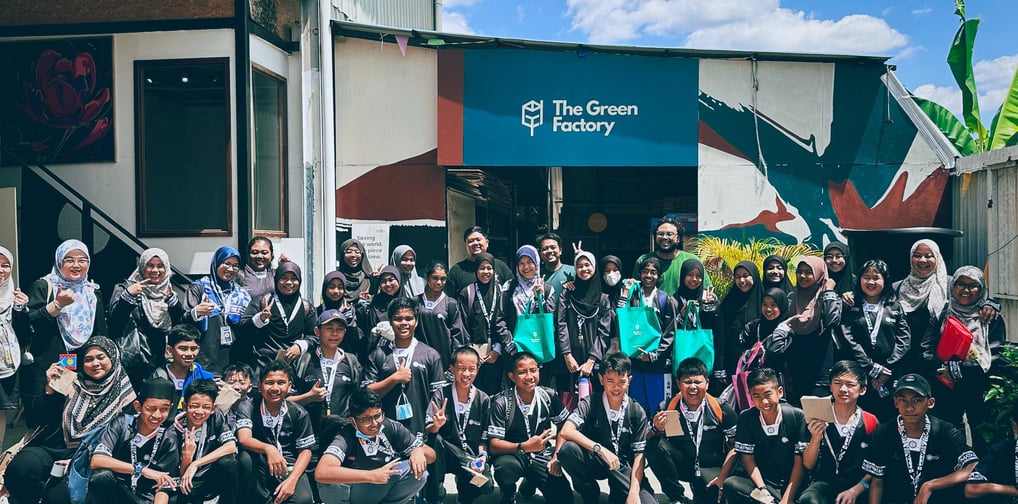

(2025) We’ve had the opportunity to share our journey with the thousands of visitors who’ve toured our humble factory—ranging from corporate teams and industry professionals to academics, students, and the general public. This image is a visit by students of the Malaysian National Gifted Centre (Permata Pintar), eager to learn about our sustainable manufacturing practices.
While The Green Factory focused on the production side of sustainability, I saw another gap - businesses needed more than just sustainable products; they needed guidance on how to transition toward sustainability as a whole. That’s when The Green Factor was born in 2021, initially as a podcast project where I interviewed industry leaders about sustainability challenges and innovations. These conversations revealed a deeper need for hands-on support, and soon, The Green Factor began evolving beyond discussions into a consultancy and R&D initiative.
Evolving into The Green Factor
What started as a platform for knowledge-sharing has now transformed into a service-driven venture, offering expertise to businesses navigating sustainability projects. From material innovation and waste repurposing to circular business strategies, I have expanded my scope beyond timber, helping industries rethink their approach to waste, production, and resource management.
Today, The Green Factor serves as a bridge between vision and execution, helping businesses implement sustainability practices effectively, whether through procurement strategies, product design, or operational optimisation. Together with The Green Factory, these platforms empower businesses, institutions, and individuals to take meaningful steps toward a more responsible and circular economy. Through them, I hope to continue pushing boundaries in sustainable design, entrepreneurship, and industry transformation.
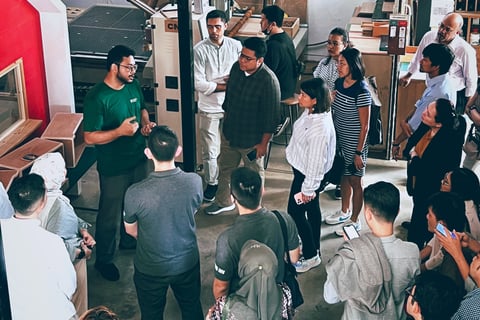

(2024) Sharing insights with corporate leaders about my green entrepreneurship journey and sustainable business approaches.
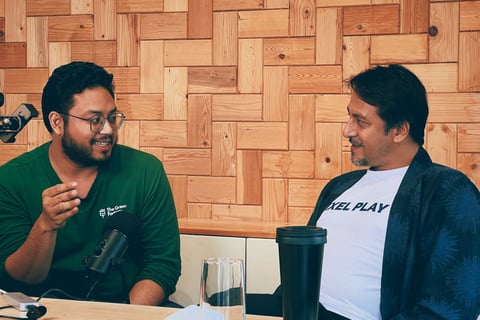

As part of my Green Factor project which began in 2021, I had the pleasure of interviewing over 80 industry leaders to discuss about different aspects of sustainability, including entrepreneur and actor, Mr. Bront Palarae.
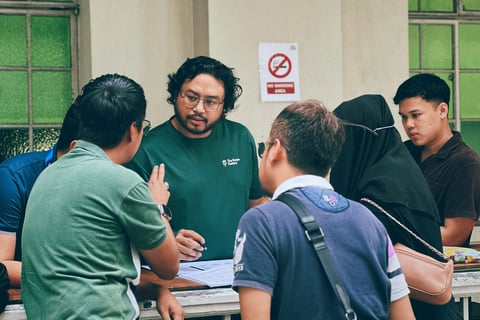

The Green Factor, the consultancy arm of The Green Factory, has grown beyond timber to explore waste innovation and develop new, sustainable materials.
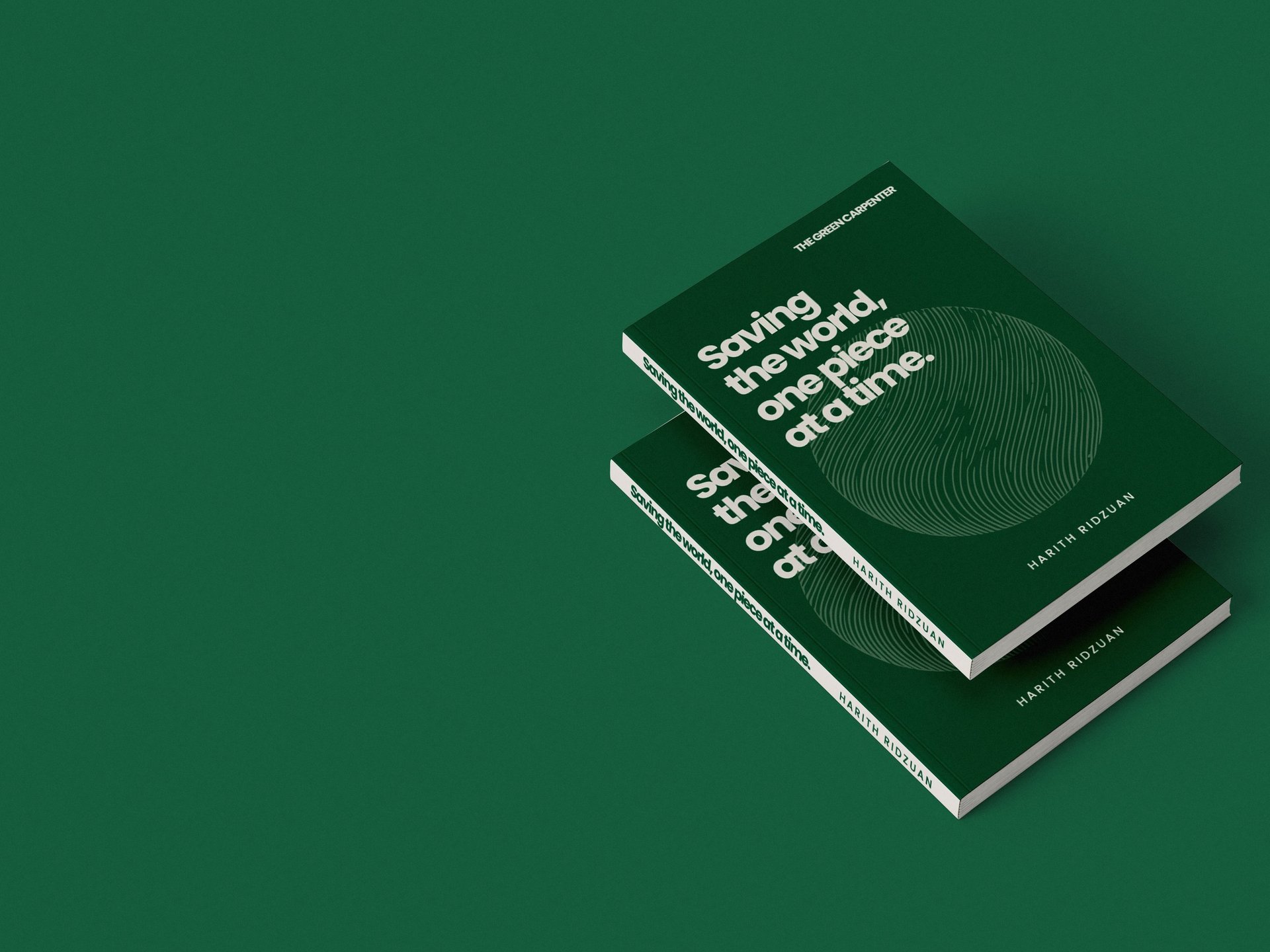
I’ve shared some highlights: how I grew up in a bustling household, found my feet in a strict military school, discovered my passion for sustainability in our family factory, and built a business that prioritises people and the planet. But this is only the surface of my journey. More details - my personal failures and triumphs, the many highs and lows - are waiting to be told in full.
A Preview of What’s to Come
If you’re curious to learn:
How military school shaped my entrepreneurial approach in surprising ways.
The epic fails I encountered in my first attempts at using discarded materials.
The personal struggles I faced when my sustainable dreams clashed with traditional business views.
The behind-the-scenes story of moving to The Green Factory and the chaos, creativity, and lessons that followed.
I’ll be releasing my comprehensive journey in both hardcopy and eBook formats, diving deeper into each chapter of my life, from childhood chaos, military discipline, family business traditions to forging a sustainable path in an industry potential of positive change. Stay tuned!

Follow my journey
Stay updated on my social channels and subscribe to my newsletter to get a heads-up on my latest updates & announcements.
